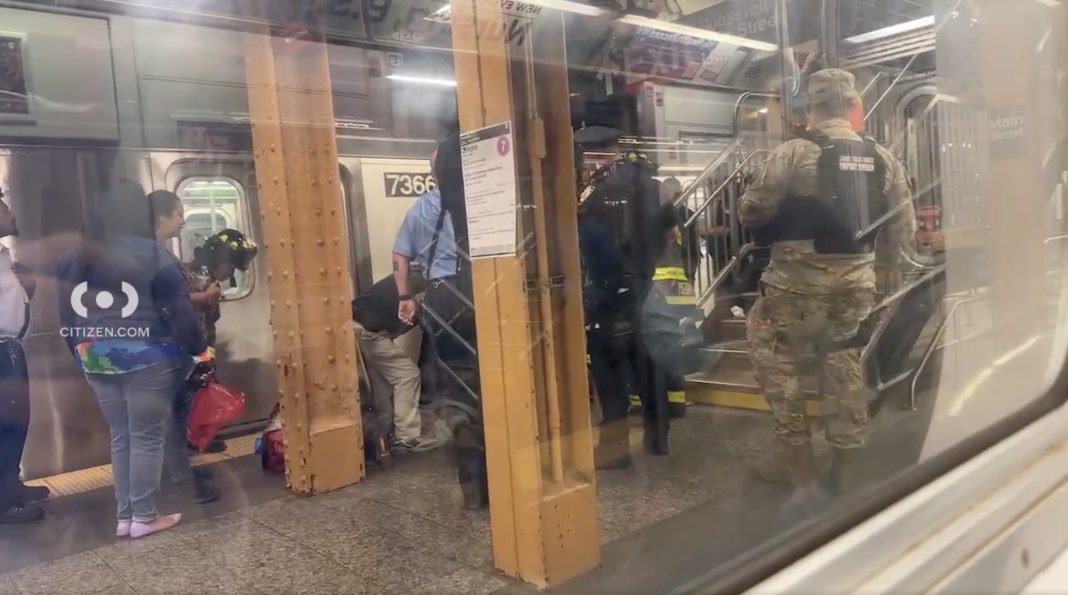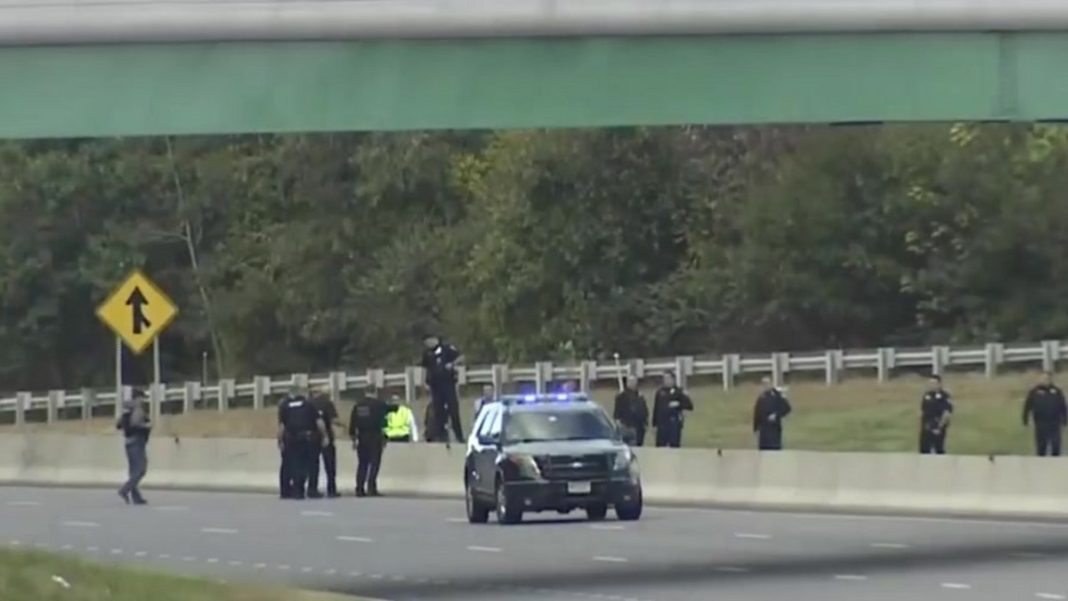In a shocking act of violence that has sent ripples of fear through New York City’s subway system, an 82-year-old woman was violently pushed onto the tracks at the Flushing-Main Street No. 7 station. This incident, occurring just before noon on a Wednesday, is emblematic of a growing trend of violent encounters in the city’s underground transit system.
The elderly victim, whose identity remains protected, was reportedly shoved by a stranger in a seemingly random attack. Witnesses describe the harrowing scene: she struck her head against the side of the train, leaving behind a bloody aftermath before falling between the cars. Thankfully, emergency medical technicians (EMTs) arrived promptly, and she was rushed to NewYork-Presbyterian Queens Hospital, where she was listed in stable condition. However, the assailant fled the scene and remains at large, further contributing to the climate of fear that has come to characterize subway travel in the city.
This disturbing episode is not an isolated incident but part of a troubling trend. Recent weeks have seen a spike in violent crimes within the transit system, raising alarms about safety for commuters. Just last week, another alarming incident occurred when Lamel Batten, a man with an astonishing 51 prior arrests, was accused of attempting to rape a woman at the 116th Street/Columbia University subway station. Eyewitness accounts suggest he violently threw her against a wall, a chilling reminder of the vulnerabilities people face in public spaces.
Moreover, the violence extends beyond sexual assaults. In an unrelated incident, a 45-year-old man was stabbed in the chest during a confrontation on a Bronx train platform at the 138th Street-Grand Concourse station. This occurred early in the morning, underscoring that danger lurks at all hours. Thankfully, he was stabilized at Lincoln Medical Center, but such attacks raise critical questions about the safety measures in place for commuters.
This surge in violence is prompting city officials and law enforcement to reevaluate security protocols in the subway system. Experts have pointed out that the pandemic has exacerbated mental health issues, resulting in increased aggression and erratic behavior among some individuals in public spaces. A study by the New York City Department of Health and Mental Hygiene indicated a rise in psychological distress during and post-pandemic, suggesting that the repercussions of isolation and anxiety might manifest in violent behaviors.
The prevalence of violence against vulnerable populations, especially the elderly, is particularly concerning. A report from the World Health Organization highlights that older adults often face higher risks of victimization, which can lead to profound psychological and physical repercussions. As cities evolve, the need for robust strategies to protect these individuals becomes ever more critical.
The recent attacks have sparked conversations among New Yorkers about personal safety and the effectiveness of the city’s response to transit crime. Many commuters are now contemplating alternative modes of transportation or traveling in groups to mitigate risks. “I never thought I’d feel unsafe in my own city, especially on the subway,” lamented one frequent rider. “But now, I double-check my surroundings and even consider taking a cab instead.”
As the city grapples with these challenges, it is imperative for local authorities to enhance surveillance, increase police presence, and implement community engagement initiatives aimed at fostering a culture of safety. Only through a concerted effort can New York City hope to restore a sense of security and trust in its public transit system.
In the wake of such violent occurrences, one cannot help but ponder: How can we safeguard our communities while ensuring that public spaces remain accessible and welcoming? The answer lies in a multifaceted approach that prioritizes mental health, community safety, and proactive law enforcement strategies.

